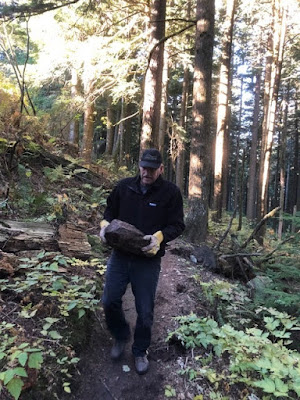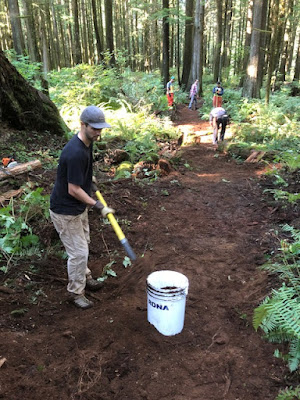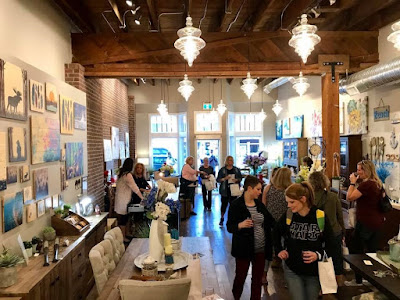Since the fall of 2014, significant
progress has taken place in this city’s efforts to address homelessness. The
memories of the years just prior to 2014 would recall several unpleasant and confrontational
exchanges between the homeless, their advocates, and the City, culminating in a
court challenge that wound its way to the Supreme Court, concluding during this
term.
As the result of
recommendations from the Task Force on Homelessness, 2014, an Action Plan with
Five Strategic Directions resulted. The first and most important step was the
hiring of a full-time Coordinator of Homelessness (Housing added later to her
portfolio), and together with a newly-created Homelessness Action Advisory
Committee, launched an ambitious program to address homelessness. A critical
factor in determining the effectiveness of this committee was the invitation to
key players to sit at this table – Fraser Health, BC Housing, Salvation Army,
MCC, Abbotsford Community Services, and several local service providers. I was
honoured to chair this committee for the first two years, and I’m sure I speak
for Councillor Siemens in saying he too considered it an honour to chair it in
the last two years.
The federal government granted
the city $400K to apply towards research and development of a Homelessness
Prevention and Response System for addressing homelessness, which will be a
pilot for eventual application across Canada. This system “…is not solely
owned, managed or funded by one level of Government, one agency, or sector. The
System is a community resource system comprised of the collaborative efforts,
projects, initiatives and programs with aligned purpose to respond to and
prevent homelessness.”
Collaborative Stakeholder mapping for the Homelessness Prevention and Response System
Since the fall of 2014, the collaborative
impact has provided for the following changes through policy advocacy,
collaboration, alignment of activities across sectors, shared funding, and
coordination:
System Component
|
2014
|
2018
|
|
|
|
Extreme Weather Mat
|
-20
|
-175
-We succeeded in having the definition of extreme weather
changed to include cold wet weather
|
Outreach Services
|
-Salvation Army – Homelessness Prevention Program (HOP)
|
-Salvation Army -HOP
-ACS – Homelessness Prevention Program (HPP)
-Look Out Society – HPP
-Ministry of Social Development – Integration Workers
Inter-Agency Care Team supporting Integrated Outreach activities
|
Integrated Health and Housing Outreach and Wrap-Around Support
|
|
-Assertive Community Treatment
-Inter-Agency Care Team (Fraser Health Authority, City of Abbotsford
(Service Canada funded)
|
Enhanced Health Linkages
|
-Abbotsford Hospital
-Primary Health Services
-Abbotsford Mental Health and Substance Use
-Home Health Care
|
-Abbotsford Hospital
-Primary Health Services
-Abbotsford Community Hub Centre (feasibility study nearing
completion)
-Integrated health services and linkages across divisions
-Opioid response activities (Community Action Team, Project
Angel Initiative, Peer Network and Engagement activities
|
Housing
|
-70 units of supportive housing
|
-100 units of supportive housing
-80+ units now in City review process
-60 units in process (First Nations project)
-Housing with Abbotsford Rental Connect (securing rental units
in the private market)
Additional rent subsidies from BC Housing
|
System Sustainability
|
|
Collaborative Stakeholder mapping for the Homelessness
Prevention and Response System;
-Harm Reduction Strategy
-Affordable Housing Strategy update
-Exploring Abbotsford Housing Foundation
-Affordable Housing Strategy Update
-Shared Outcome and Measurement and Data Management
|
Community Capacity Building
|
|
-Community of Integrated Practice
-Curriculum development
-Virtual Platform Development
|

40-Bed Emergency Shelter on Riverside Road.
Announcing 80 Modular Housing units for Abbotsford, 2018
Councillor Loewen, Shane Williams (Ex. Director, Lookout Society), & Minister Selina Robinson, Minister of Municipal Affairs and Housing.
The following is taken from a recent report tabled by the
City’s Coordinator of Housing and Homelessness.
The Abbotsford Homelessness Prevention and Response System
pilot is continuing.
1) Housing
with Abbotsford Rental Connect has fully launched and has completed 20
pre-screens for housing applicants, 3 intakes and the age of participants
ranges from the majority being below 50 years of age to the oldest participant
being 80 years old.
2) The
Inter-Agency Care Team/Intake Function are currently providing intensive
support for 37 participants,
3) The Intake Function for the Coordinated Intake
and Referral for housing, health, income assistance, and community support has
received close to 256 referrals into the system since September 1, 2017, and
are working closely with the inter-agency outreach collaborative, Ministry of
Social Development, health service networks, and local agencies to support
individuals who may be experiencing homelessness to strive towards accessing
services, wellness, and housing readiness;
4) Twelve of the 37 individuals receiving
intensive support from the Team are currently housed and others are working
towards housing readiness and individual wellness goals.
5) Abbotsford Housing Endowment Fund/Foundation
exploration is continuing.
6) The Civic Mobile Application is being reviewed
for potential to be utilized as a virtual platform for public and stakeholder
communications and the City’s web-page is being updated to include a resource
repository.
Hearthstone Place, Gladys Ave.
31-Unit, Long-term Housing
An “Abbotsford Stories
Project” is underway, which will produce video-based, personal stories and
resources for workers in this field. In addition, the City is collaborating
with University of Fraser Valley to develop on-line, web-based curriculum for
the Community of Practice resources. Annual community forums are held for a
wide variety of stakeholders and people working in the field, for professional
development in this field of work. The most recent one was attended by over 140
participants, and the major focus was on peer voice and engagement.
The task of addressing
homelessness is complex with multiple facets. The increasing number of those
who find themselves homeless in our community can be discouraging, and it is
certainly cause for concern. The city is in a much better position today than
it was four years ago. The city and its partner organizations have accomplished
more than all previous councils combined and have laid a solid foundation for
continued work at addressing homelessness, notwithstanding the growth in
homeless numbers. Today, Abbotsford is regarded as a leader within the municipal community across BC. I believe that momentum is now in our favour in the goal of providing a home for everyone.





























